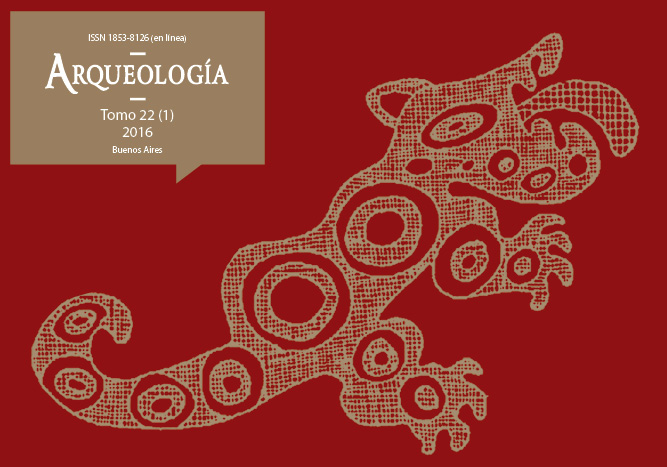One room dwellings. Social reproduction strategies in domestic context from Pueblo Viejo de Tucute (Puna of Jujuy, Argentina)
Keywords:
Domestic spaces, Archaeological architecture, Social reproduction, Puna of Jujuy
Abstract
Pueblo Viejo de Tucute (Puna de Jujuy, Argentina), dated in the Regional Development Period, shows a distinctive architectural pattern with hundreds of circular dwellings built on stone walled terraces. Nine of these round houses have been test pitted and two of them have been fully excavated. The comparison between these houses, regarding their setting and their associated archaeological materials, allows us to propose differences and similarities regarding the organization and use of the domestic spaces, and also to inquire about the social status of the inhabitants of both archaeological households. The identification of fixed and semi-fixed architectural features and the analysis of the recovered artifacts show different activities related to economic and social reproduction strategies. Basic biological and material aspects, productive activities and symbolic practices associated with communal reproduction are recognized. Data from colonial chronicles and ethnographic studies from the Bolivian altiplano from the first half of the 20th century describe the way of life and the use of dwellings with similar characteristics.Downloads
Download data is not yet available.
How to Cite
Basso, D. M., Tolaba, J. L., Zaburlín, M. A., & Albeck, M. E. (1). One room dwellings. Social reproduction strategies in domestic context from Pueblo Viejo de Tucute (Puna of Jujuy, Argentina). Arqueología, 22(1), 81-101. https://doi.org/10.34096/arqueologia.t22.n1.2466
Section
Articles
Authors who publish in this journal agree to the following conditions:
- Authors retain copyright and yield to the journal right of first publication with the work registered with attribution license Creative Commons, which allows third parties to use the published always mentioning the authorship of the work and first publication in this magazine.
- Authors can make other independent and additional contractual arrangements for the non-exclusive distribution of the version of the article published in this issue (p. Eg., Inclusion in an institutional repository or publish it in a book), provided that clearly indicate that the work was published for the first time in this magazine.
- It allows and encourages the author / s to publish their work online (eg institutional or personal pages) before and during the process of revision and publication, as it can lead to productive exchanges and greater and more rapid dissemination of work published (See The Effect of Open Access).





(1)13.png)






1.jpg)
1.jpg)


13.png)
1.png)


(1)1.png)









